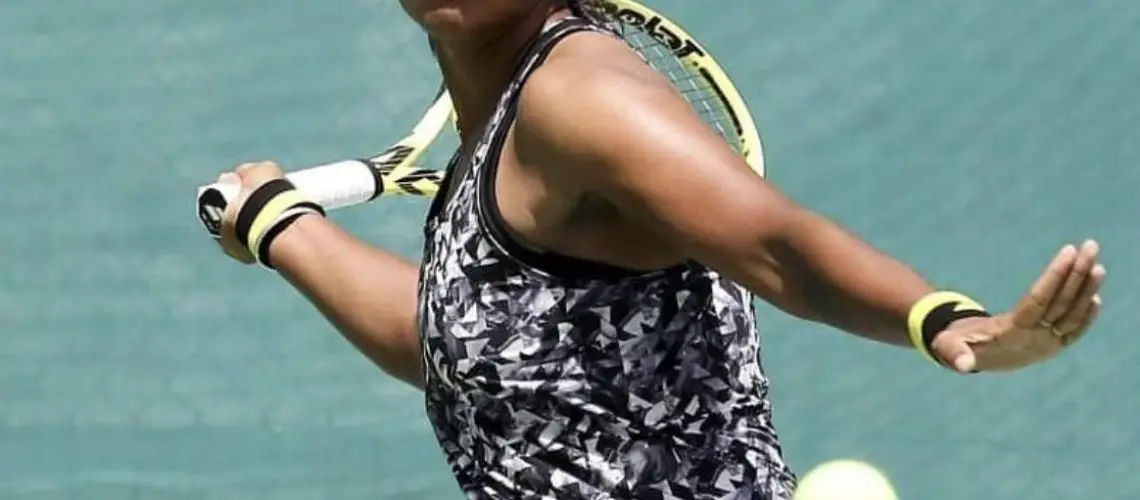We may earn money or products from the companies mentioned in this post.
Introduction

Welcome to our comprehensive guide on tennis ball size! Whether you’re a beginner or an experienced player, understanding the importance of tennis ball size is crucial for optimal performance on the court In this blog, we’ll explore the fascinating history of tennis balls, delve into why knowing the right size matters, and provide you with all the information you need to make informed decisions when it comes to selecting the perfect ball for your game
Brief History of Tennis Balls
Tennis balls have come a long way since their humble beginnings Originally, they were made from stitched cloth filled with various materials such as wool or hair In the 19th century, these primitive balls were replaced by rubber-based ones, which significantly improved their bounce and durability
Fast forward to today, and we have modern tennis balls crafted with precision using cutting-edge technology They are manufactured to specific standards that ensure consistency in size, weight, and performance across all professional tournaments and recreational play
The Importance of Understanding Tennis Ball Size
Size matters when it comes to tennis balls The International Tennis Federation (ITF) has established regulations regarding ball size to maintain fairness and consistency in gameplay
The diameter of a standard tennis ball must be between 257 inches (654 cm) and 270 inches (686 cm). While this may seem like a small range, even slight variations can affect how the ball interacts with different surfaces and racquets
Choosing the right-sized ball can impact your game in several ways:
-
Bounce:
A larger or smaller ball may have an altered bounce height due to differences in weight distribution and surface contact area -
Control:
The size of the ball affects how it responds to your racquet, influencing your ability to hit accurate shots and apply spin effectively -
Comfort:
Using a ball that is too large or too small can impact your comfort level while playing, affecting your overall performance and enjoyment of the game
Purpose of the Blog: Providing an Exhaustive Guide on Tennis Ball Size
In this blog, our goal is to equip you with all the necessary knowledge about tennis ball size We’ll delve into different types of tennis balls, their variations in size, and how these factors can impact your game By understanding the significance of ball size and its implications, you’ll be able to make informed decisions when selecting the ideal ball for your playing style and court conditions
So let’s dive in and unravel the mysteries behind tennis ball sizes!
Official Tennis Ball Size Regulations

The International Tennis Federation (ITF) has established rules and specifications regarding the size of tennis balls used in professional matches These regulations ensure consistency and fairness in gameplay Let’s explore the key requirements set by the ITF:
ITF Rules and Specifications
The ITF mandates certain criteria for tennis ball dimensions, weight, bounce height, and deformation/compression standards
1 Diameter Range
Tennis balls must have a diameter within the range of 6541 to 6858 mm (257 to 270 inches). This specific size ensures that players have a consistent experience when hitting the ball
2 Weight Range
The weight of a tennis ball should fall between 56 to 59 grams (197 to 208 ounces). Sticking within this range allows for optimal control and maneuverability during play
3 Bounce Height Requirements
The ITF also sets guidelines for the bounce height of tennis balls on different court surfaces such as clay, grass, or hard courts These requirements help players anticipate and respond to their opponent’s shots effectively
4 Deformation and Compression Standards
To ensure fairness and consistency, tennis balls must meet specific standards for deformation and compression set by the IT These standards determine how much a ball can deform upon impact with a racket
Types of Tennis Balls
Tennis balls that comply with ITF regulations are available in various types based on court surface or playing conditions:
1 Regular Duty Balls
Regular duty balls are designed for use on clay courts or indoor surfaces These balls have a softer felt cover that allows for better grip and control on slower surfaces
2 Extra-Duty Balls
Extra-duty balls are suitable for hard courts or grass courts, where the playing surface is faster These balls have a more durable felt cover to withstand the abrasive nature of these surfaces
3 Equipment Categories
The ITF classifies tennis balls into three equipment categories: Type-1, Type-2, and Type-3 Each category represents different performance characteristics and suitability for specific playing conditions
In conclusion, adhering to the ITF’s official tennis ball size regulations ensures fairness and consistency in professional matches The specified dimensions, weight range, bounce height requirements, and deformation/compression standards contribute to a level playing field for all players
Tennis Ball Sizes in Different Contexts

Recreational Play
When it comes to recreational tennis, there are a few key differences between professional and recreational tennis balls Professional tennis balls are specifically designed for high-level competition, with strict regulations on size, weight, and bounce On the other hand, recreational tennis balls often offer more flexibility in terms of size and bounce
Recreational players can choose from various sizes of tennis balls to suit their preferences and playing styles One option is miniature tennis balls, which are smaller than standard-sized ones These miniaturized versions provide a unique playing experience that can enhance hand-eye coordination and control
For those looking to add an element of fun to their game, jumbo and oversized tennis balls are available These larger-than-life spheres bring a playful twist to the court, creating laughs and entertainment for players of all ages
Children’s Tennis Balls
The Progressive Tennis System introduces children to the sport through different stages: Red, Orange, and Green Balls Each stage corresponds to specific age groups and ball characteristics that aid in skill development
-
Red Stage:
Designed for children under eight years old, red stage tennis balls have low compression and a larger diameter compared to standard adult-sized balls This allows young players to easily generate power while still maintaining control over the ball -
Orange Stage:
Intended for children aged nine to ten years old, orange stage tennis balls have medium compression and a slightly smaller diameter than red stage ones This transition prepares young players for using standard-sized yellow stage balls by gradually adjusting the ball’s characteristics -
Green Stage:
As children progress, they move on to the green stage, typically around ages eleven and twelve Green stage tennis balls have a standard size and varying levels of compression based on age group This helps young players make a seamless transition to using regular yellow stage tennis balls
By adapting ball sizes to match children’s age and skill level, the Progressive Tennis System encourages proper technique development and ensures an enjoyable learning experience on the court
Factors Influencing the Size of a Tennis Ball

When it comes to the size of a tennis ball, several factors come into play From the manufacturing process to aging and wear-and-tear effects, as well as environmental conditions, these elements can all contribute to variations in size Let’s dive deeper into each of these factors and explore how they influence the size of this iconic sports equipment
Manufacturing Process
The manufacturing process plays a crucial role in determining the size of a tennis ball It involves using specific materials such as a rubber core and a felt exterior
The rubber core provides the necessary bounce and elasticity, while the felt exterior ensures grip and durability Both materials need to be carefully selected and crafted to meet certain specifications
To ensure consistent size production, manufacturers implement rigorous quality control measures throughout every step of the manufacturing process These measures help maintain uniformity in size across different batches of tennis balls
Aging & Wear-and-Tear Effects on Tennis Ball Size
Tennis balls are not immune to aging and wear-and-tear effects over time As they age, certain changes can occur that impact their size
One significant factor is the loss of pressure within the tennis ball Over time, air molecules escape from the rubber core, causing a decrease in internal pressure This loss of pressure affects both the size and bounce of the ball
In addition to pressure loss, constant usage leads to deterioration of the felt exterior The friction between the ball and surfaces like courts or racket strings slowly wears down the felt layer This gradual deterioration can also contribute to changes in size over time
Environmental Conditions
The environment in which tennis balls are stored or played with can also influence their size
Temperature and altitude are two key environmental factors that can affect tennis ball size Extreme temperatures, whether hot or cold, can cause the rubber core to expand or contract, leading to variations in size
Altitude is another factor to consider At higher altitudes, where air pressure is lower, tennis balls may appear larger due to the difference in atmospheric conditions
Additionally, humidity plays a role in ball size Moisture absorbed by the felt exterior can lead to slight expansion or contraction of the material, impacting overall ball size
In conclusion, the size of a tennis ball is influenced by various factors including the manufacturing process, aging and wear-and-tear effects, as well as environmental conditions Understanding these influences helps players and manufacturers alike ensure consistent performance on the court
Conclusion

In conclusion, understanding the importance of tennis ball size is crucial for any tennis player By recapping the key information about tennis ball size, we have learned that there are three different sizes available: standard, mid-range, and low-compression Each size has its own unique characteristics and is suited for specific types of players
The Importance of Choosing the Right Tennis Ball
Choosing the right tennis ball for your needs cannot be overstated The size of the ball directly impacts your performance on the court Playing with a ball that is too big or too small can lead to difficulties in controlling your shots and affect your overall game
For beginners or recreational players, using a standard-sized tennis ball provides a good balance between bounce and control It allows you to develop proper technique and get accustomed to the game’s dynamics
On the other hand, intermediate or advanced players might benefit from using mid-range or low-compression balls These balls offer different levels of compression, allowing players to fine-tune their shots and adapt to various playing surfaces
Enjoying Tennis Responsibly with Properly-Sized Equipment
Lastly, it is important to emphasize the responsibility we have as tennis enthusiasts to enjoy the sport with properly-sized equipment Using the correct tennis ball size not only enhances our own performance but also promotes fair play and maintains a level playing field among opponents
By taking care in selecting appropriate-sized balls for our skill level and playing conditions, we can ensure an enjoyable experience for ourselves and others on the court Remember, it’s all about finding that perfect balance between challenge and enjoyment!
In conclusion, let’s aim to master our skills by choosing the right tennis ball size, respecting fair play guidelines, and savoring every moment of the game Tennis is a sport that brings people together, and with the right equipment, we can all make the most of our time on the court
Useful Links

Pickleball vs Tennis: What’s The Difference?
If a million is the size of a tennis ball, what size would …
At U.S. Open, Love Is Extra Large for the Jumbo Ball
Balls
Large Tennis Ball
Why Junior-Sized Tennis Balls Are Important
Tennis Balls in a Can
KONG SqueakAir Tennis Balls Pack of 2, Large
xl tennis ball 8.5 | let go & have fun
Large Tennis Ball for sale
Tennis Ball vs Baseball – Size And Weight Compared
What tennis level
6” Tennis Ball Beach Ball
Air KONG X-Large Squeaker Tennis Ball
5 Differences Between Pickleball and Tennis
Midlee 3 Inch Large Tennis Balls For Dogs, Pack Of 4 …
Squeaker Ballz Squeaky Tennis Balls, Large






